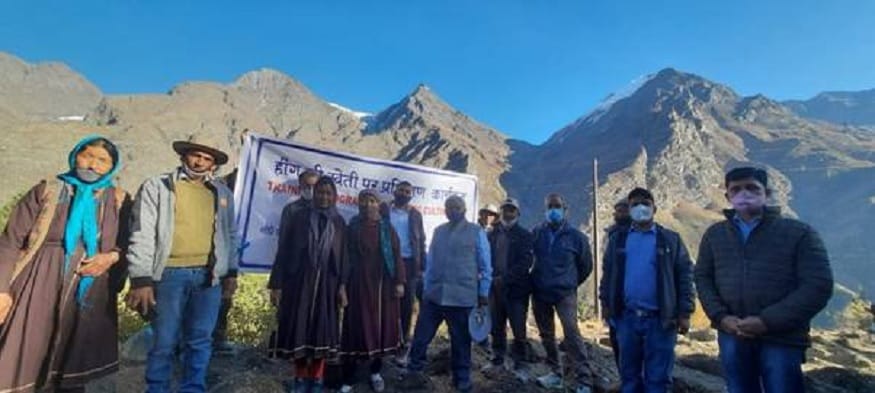New Delhi. Due to the efforts of CSIR constituent laboratory, Institute of Himalayan Bioresource Technology (IHBT-Institute of Himalayan Bioresource Technology), Palampur, there has been a historic change in the farming methods of the farmers of the remote Lahaul Valley of Himachal Pradesh. Due to this change, the farmers here (Hing Cultivation in India) have now adopted the cultivation of Asafoetida (Hing) () with the aim of making good use of the vast barren land in the cold desert conditions of this area. CSIR-IHBT brought the seeds of asafoetida for this and developed its agricultural technology.
740 crore rupees are spent on the import of asafoetida- Asafoetida is one of the major spices and it is a high value spice crop in India (Hing Cultivation in India). India imports about 1200 tonnes of raw asafoetida annually from Afghanistan, Iran and Uzbekistan and spends about US $ 100 million per year for this.
Cultivation of asafoetida started in India- Lack of planting material of Ferula Assa-foetida in India was a major hurdle in the cultivation of this crop. With the aim of starting cultivation of Asafoetida (Hing) in India, on October 15, 2020, the first plant of Asafoetida (Hing) was planted in a farmer’s field in a village named Quaring in Lahaul Valley by Dr. Sanjay Kumar, Director, CSIR-IHBT.
As Asafoetida (Hing) is a major spice in Indian kitchen, the team of CSIR-IHBT made tireless efforts to introduce this important crop in the country. The Institute started cultivation in October, 2018 using six bunches of seeds brought from Iran through ICAR-National Bureau of Plant Genetic Resources (ICAR-NBPGR), New Delhi.
ICAR-NBPGR confirmed that this was the first attempt to use Asafoetida (Ferula Assa-foetida) seeds in the country in the last thirty years. ICAR-IHBT grew asafoetida plants in CEHAB, Ribling, Lahaul and Spiti, Himachal Pradesh under the supervision of NBPGR.
This plant prefers cold and dry conditions for its growth and it takes about five years for the resin called oleo-gum to be produced in its roots. This is the reason why the cold desert areas of the Indian Himalayan region are suitable for the cultivation of Asafoetida (Hing).

Raw Asafoetida (Hing) is extracted as an oleo-gum resin from the fleshy roots of Ferula Assa-foetida. Although about 130 species of Ferula are found in the world, but only the economically important species Ferula Assa-foetida is used for the production of Asafoetida (Hing).
In India, we do not have Ferula asa-foetida, but its other species Ferula jaeschkeana found in western Himalayas (Chamba, Himachal Pradesh) and Ferula narthex found in Kashmir and Ladakh, which are not asafoetida (hing) producing species.
CSIR-IHBT scientists also organized training programmes on asafoetida cultivation and created demonstration plots in the villages of Madgran, Billing and Keylong in Lahaul Valley of Himachal Pradesh in collaboration with State Agriculture Department officials for establishment of seed production chain and cultivation of asafoetida on commercial scale.
This is how asafoetida is made from raw material coming from abroad- Shyam Prasad, a resident of Hathras and an expert on asafoetida, says that resin (milk) comes from Iran, Afghanistan, Kazakhstan and Uzbekistan. This milk comes from a plant. Earlier, traders used to bring milk directly to Hathras. But now Khari Baoli area of Delhi has become a big market. But the processing work is still done in Hathras. 15 big and 45 small units are doing this work. The oleo-gum resin (milk) coming out of the plant is processed along with flour. Now some units have opened in Kanpur as well. Apart from the country, asafoetida made in the country is exported to Gulf countries like Kuwait, Qatar, Saudi Arabia, Bahrain etc.
Tags: Hing (Asafoetida) Price
FIRST PUBLISHED : October 20, 2020, 09:28 IST
